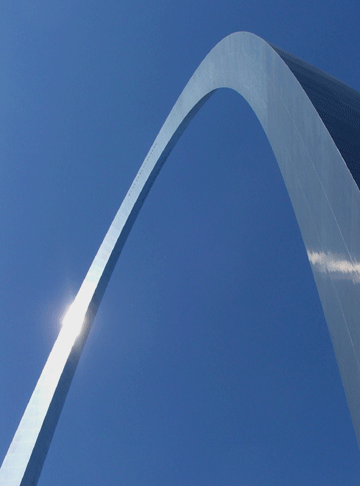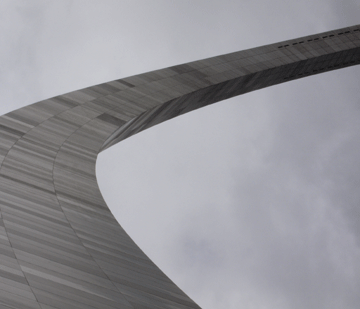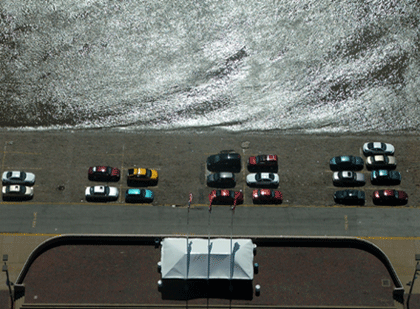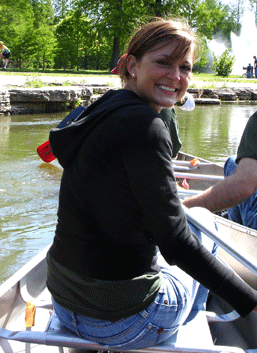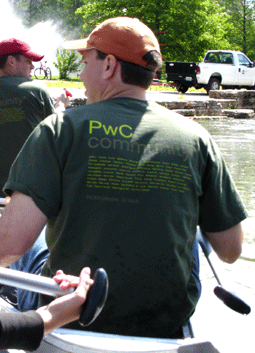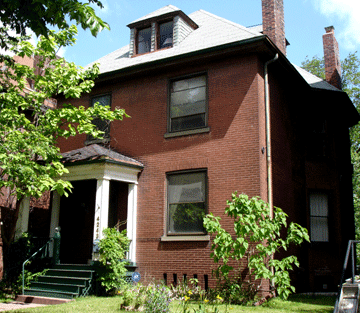Tales of a
21st Century Gypsy
May 12, 2006.
St. Louis, MO
I went to St. Louis because it was there – not because I was really interested in the town. But as it turned out, I really liked it. I arrived on a rainy day and found myself in a big park dotted with museums, bike trails, playing fields, and a zoo. I stopped at the art museum, mostly to see if I could use the toilet without paying to go in, and found that it was free! So I spent a few hours there, and a very nice few hours they were. It’s a delightful museum – not too big to be manageable, but big enough to have a good variety of work – European decorative art, American painting, African textiles and sculptures, figures of Asian goddesses, Tiffany lamps, and really strange sculpture visible on the grounds through the windows. People there were friendly, too. I had a nice chat with one of the curators, and a long discussion over coffee with a woman who’s a museum regular, photographing and drawing the artworks. The gift shop was a wonder as well, though I resisted the temptation to buy more than a couple of cards. Whoever does their buying knows just how to catch the eye of women in an artsy mood with a bit of cash to spare. Vibrant silk sashes and jackets, cleverly arrayed on manikins at the entrance. Colorful knick-knacks packed in sparkling drawstring bags. Lovely jewelry by local artists and designers. Blank books from all parts of the world, of handmade paper bound with silk, leather, and beads. The whole place was calm, soothing, and beautiful.
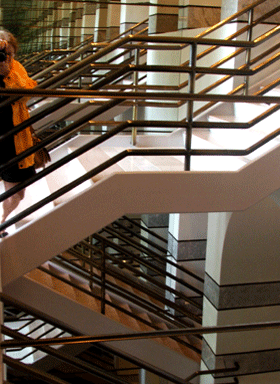 |
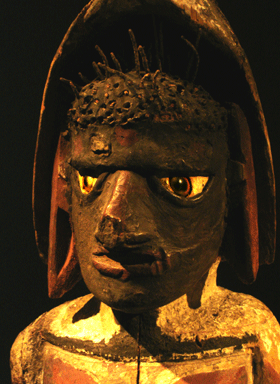 | |
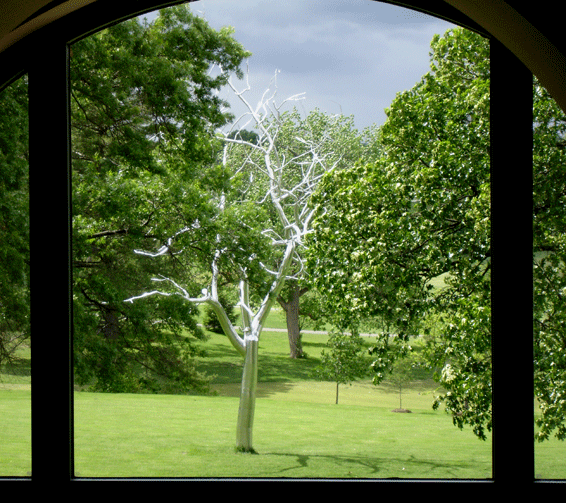 | ||
In late afternoon I drove downtown to see what there was to see. It was a dismal drive. The park – Forest Park, it’s called – is a few miles from the river, and the stretch between them is, to an alarming extent, derelict, destroyed, abandoned. It’s hard to look at; what were once attractive neighborhoods of modest clapboard houses and gardens, now frighteningly empty, for several miles. By the river there’s a sense of slightly unreal renovation – a new stadium, a renovated train station converted to a fancy hotel, with a spectacular lobby in what was once the main hall and a slightly seedy shopping mall filling the rest of the structure, selling tourist items and fast food. By the water the arch, which I’d only seen once before – from the air, flying to California – is spectacular, no doubt about it. But the area around it closes up at night, except for a few bars and restaurants seemingly targeting conventioneers.
